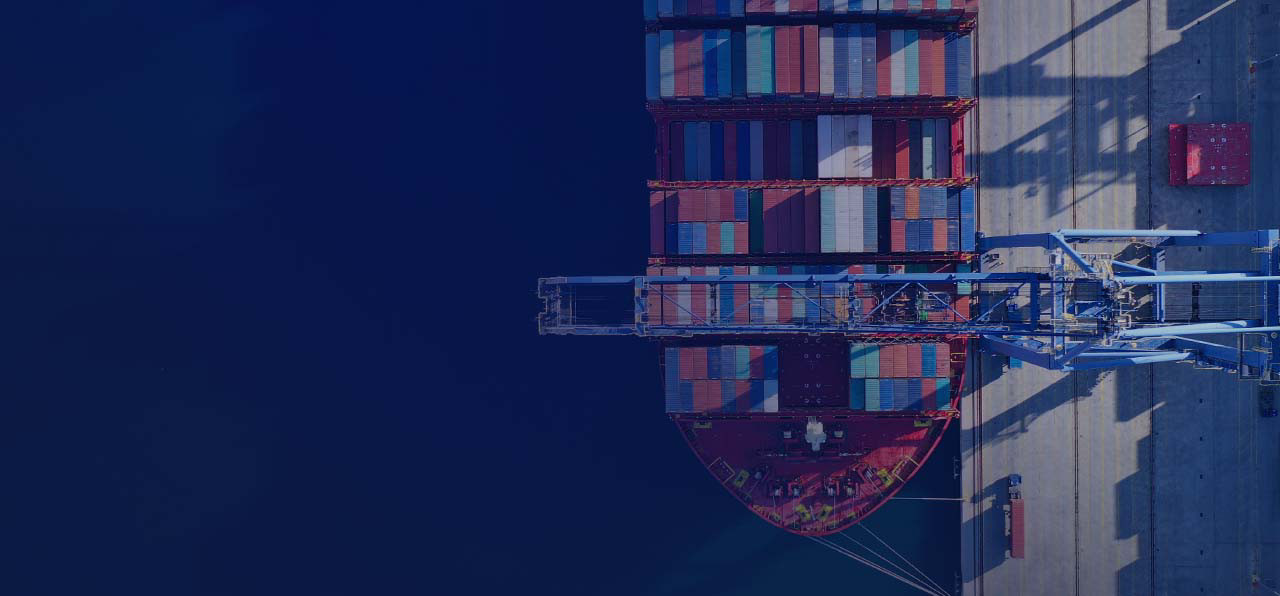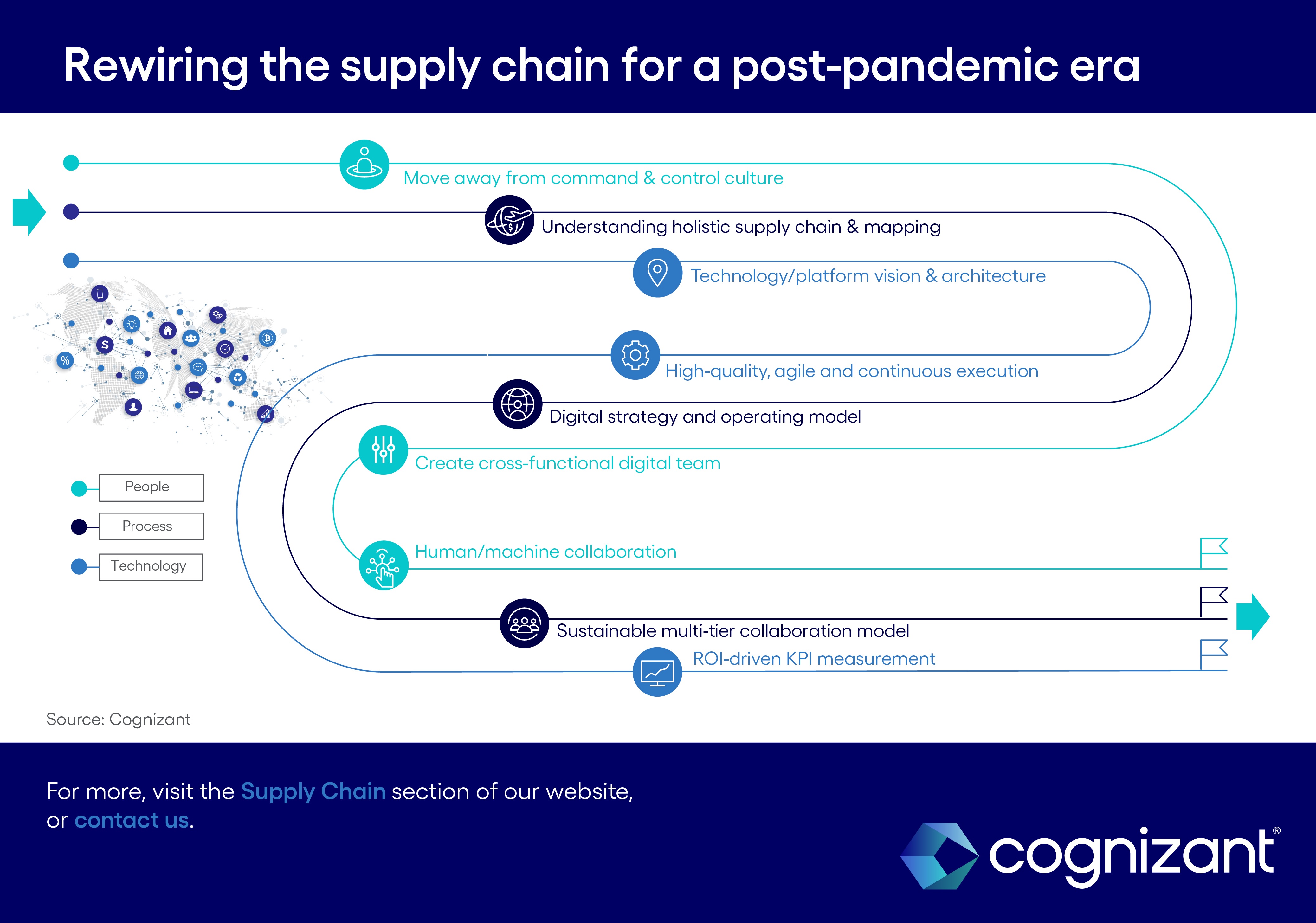May 18, 2022
Three ways to prepare supply chains for the challenges ahead
Emerging technologies and a strong desire to change show the way forward for global supply chains battered by disruptions.
Years of cost optimization, vendor consolidation and just-in-time inventory management left businesses ill-prepared for the supply and demand shocks unleashed by the COVID-19 pandemic. In its aftermath—and in response to environmental, social and governance (ESG) issues—companies are reimagining their supply chain strategies.
The goals: strengthen resilience, improve sustainability and enable all stakeholders to collaborate while upholding climate commitments.
Future disruptions caused by climate change pose a bigger threat than any other factor. The CDP estimates that environmental supply chain risks will cost companies up to $120 billion by 2026, stemming from climate change and water-related impacts, as well as increased frequency of severe weather and higher costs of raw materials.
The supply chain of the future will be built around the three critical components of people, process and technology (see Figure 1, below). The enormity of the task ahead can seem overwhelming, but the cost of inaction will be far worse.
Figure 1
Building the supply chain of the future
Here’s what we advise our clients to do to fortify their supply chains for the challenges ahead.
1. Pursue resilience
To address the vulnerabilities highlighted over the past couple of years and make their supply chains more resilient to unprecedented shocks, many US manufacturers—83% according to some estimates—will likely replace some overseas suppliers with domestic ones. Sourcing locally will not only help meet fast-changing consumer demand and increased expectations for fast deliveries, but it will also future-proof supply chains against global disruptions that lead to supply problems, cost escalations and production capacity.
Distribution centers, on the other hand, may become more geographically diversified, supported by more automated and intelligent operations. In the wake of the pandemic, for example, Nike set out to build a digital-first supply chain built around serving consumers faster and more precisely. It replaced its centralized distribution centers in the US and Europe with regional service centers, and with the use of demand-sensing and inventory optimization platforms driven by AI and machine learning, it can better predict the products consumers will demand and deliver them faster and more accurately.
We’ve seen businesses successfully build supply chain resilience by taking the following actions:
- Map volatility, uncertainty, complexity and ambiguity (VUCA) challenges to the extended supply chain rather than just focusing on individual network touchpoints
- Analyze vulnerabilities of interactions in the supply network
- Deploy digital twins to virtually stress-test the supply chain and identify weak links
- Use a digital control tower to quickly identify and resolve issues and collaborate across functions to resolve them
- Use automation to protect against labor market fluctuation, especially at the warehouse
2. Drive sustainability with data
The path to sustainability begins with setting goals and measuring progress using ESG metrics. The two quantitative measurement tools that have gained traction in this regard are Life Cycle Assessment (LCA), a quantitative tool that measures the environmental impacts of a product or service, and carbon footprinting, which involves audits of enterprise and supply chain GHG emissions.
As sustainability becomes critical, digital tools like blockchain and IoT will increasingly be used to gather and track data on products and materials, and enable traceability and provenance. In addition to instilling consumer confidence about authenticity, these digital techniques ensure minimal environmental impact throughout production, transportation and consumption of products and materials. It is becoming essential for multi-node supply chains to track product components for both regulatory compliance and to meet consumer expectations.
Sustainable supply chains don’t end when the product is delivered to the consumer. Instead, they extend beyond the traditional product life cycle, to recycling and reuse. This circularity allows businesses to extract more value from products and embark on new business models.
In 2020, the H&M Group launched a B2B service that enables other apparel retailers to access its strategically built supplier base to improve the sustainability of their own supply chains. H&M itself aims to use 100% recycled or sustainably sourced materials by 2030 and offset GHG emissions by 2040.
The need to decarbonize does not necessarily impact consumer prices. According to the World Economic Forum (WEF), a net-zero supply chain would increase the final price across a range of products by only 1% to 4%. A focus on sustainability is also critical for attracting and retaining next-gen talent. More than 70% of Gen-Z and millennial workers see environmental protection and sustainability as critical when choosing an employer.
To ensure supply chain sustainability, businesses need to:
- Audit sustainable value on a periodic basis through connected digital tools
- Map and digitize supply nodes of raw materials, from production to post-consumption recycle/reuse
- Plan for newer business models and opportunities such as the circular economy
- Track and trace using digital tools like blockchain and IoT
- Deploy AI/ML to design agile supply chains that can adapt to fast-changing regulations and consumer preferences
- Differentiate the brand using supply chain sustainability
3. Unlock value through collaboration
Countering the growing complexity and interdependence in today’s supply chain calls for greater collaboration among the participants. A McKinsey survey of over 100 large organizations in multiple sectors found that better buyer-supplier collaboration resulted in higher growth, lower operating costs and greater profitability than industry peers.
Integration is the first step toward achieving collaboration. Leading supply chain tools (IBM Sterling Commerce, Blue Yonder S&OP, Oracle, Symphony Retail and others) for planning and execution now allow organizations to share data at scale with suppliers, customers or both to reduce risk, improve efficiency and predict availability.
The Suppliers Partnership for the Environment, for instance, is a US-based collaboration between vehicle makers and suppliers that aims to achieve sustainability goals while generating economic value. The platform allows OEMs and other suppliers to collaborate on reducing carbon emissions through sustainable packaging and water conservation.
Emerging data standards allow the exchange of data across enterprises within supply chains without compromising security. Real-time data, combined with artificial intelligence- and machine learning-based algorithms, can help identify vulnerabilities and prompt quick corrective actions.
To enable collaboration across the supply chain, businesses need to:
- Modernize supply chain systems and processes with best-of-breed tools
- Map supply chain nodes and establish near-real-time information exchange
- Create strategic alignment between supply chain organizations and share best practices
- Embed transparency and trust within the supply chain
- Use digital tools like blockchain to exchange trusted and secured data across the supply chain
- Report and share value created and distributed across supply chain participants
Looking ahead
If the last two years have taught us anything, it’s that change can happen in a moment. By building a strong digital foundation for their supply chains, businesses can be forewarned and forearmed for potential disruptions in the future.
This article was written by Premankur Roy Paladhi, Senior Director and Lead, Industry Solutions Group with Cognizant’s Retail, Hospitality and Consumer Goods practice.
For more, visit the Supply Chain section of our website, or contact us.
We’re here to offer you practical and unique solutions to today’s most pressing technology challenges. Across industries and markets, get inspired today for success tomorrow.
Latest Posts
Related topics
Get actionable business Insights in your inbox
Sign up for the Cognizant newsletter to gain actionable AI advice and real-world business insights delivered to your inbox every month.
















